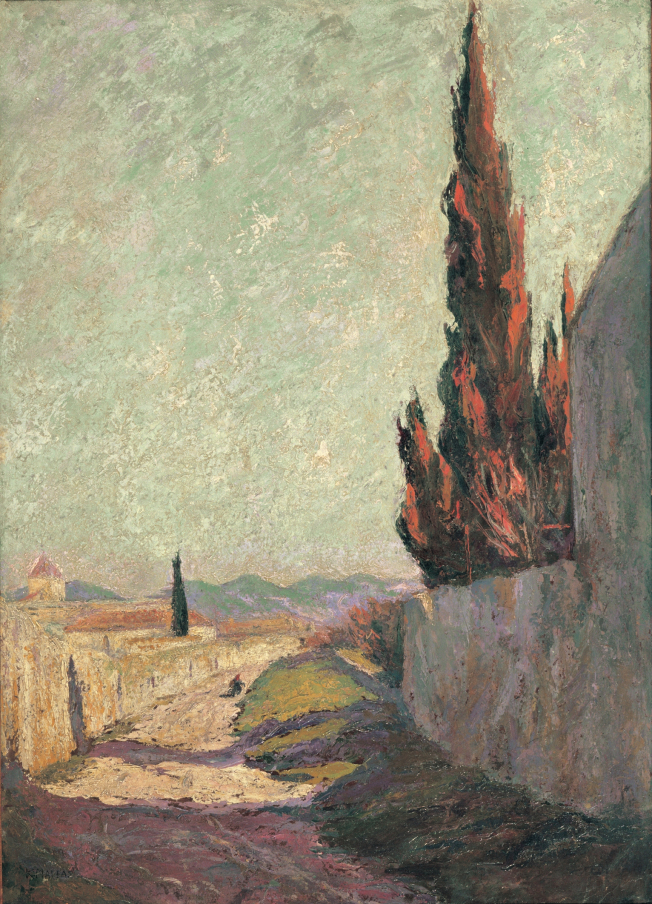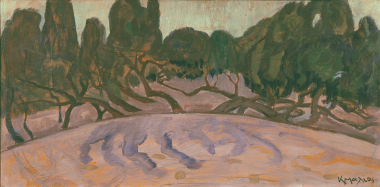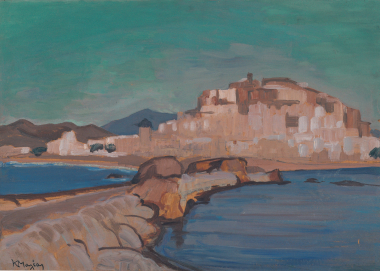Constantinos Maleas was a proponent of the spirit of renewal which was dominant in Greece in the second and third decades of the twentieth century in the arts and literature. He concerned himself almost exclusively with landscape, which he did not treat only as a visual representation of a model in nature, but as a version of the space, for the understanding of which the activation of the beholder is required, as naturalistic depiction yields place to subjective experience. An anti-naturalistic rendering of colour, a thick, nervous brush-stroke, the arrangement of the space by planes, and a strong tendency towards the decorative are echoes of the pursuits of the Fauvists, the Nabi, and the Synthetists which can be traced in the work of Maleas. An artist of the Greek Diaspora, he first trained as an architect and engineer in his native Constantinople, but then went on to study art in Paris under Henri Martin. There he was nurtured on the way of thinking of the post-Impressionists.
When, in 1908, he returned to Constantinople, he had shaped a manner of artistic expression which evolved constantly through the experiences of his visits to the East and his eventual residence first in Thessaloniki (1913), and, a little later, in Athens (1917). The lyrical impressionism, with the colour broken down into sensitive transitional tones, by means of which he renders the misty landscapes of the Bosporus was soon outgrown. This was the case on his first visit to the East, where the blinding light has such dynamism that it intensifies colour, as that spreads, now intact, over large areas. Constant experimentation with the 'attack' of colour on the painted surface and the organisation of space, in which motifs and forms are transformed into patterns, was to lead him to daring compositions, which, in turn, led to a new interpretation of the Greek natural world.








